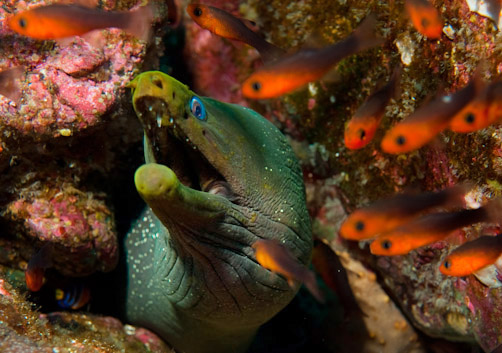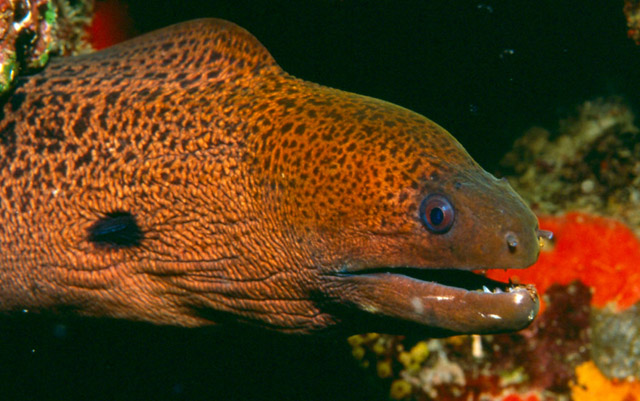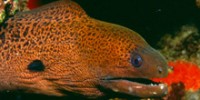By Sarah Bedolfe
Though their reputation is creepy, count yourself lucky if you see one…

Photo courtesy Schmulick Blum
There are about 200 known species of moray eels, most of which live in the ocean, though a small number of species are found in freshwater as well.
Moray eels look like serpents: the caudal fin (on the top) and anal fin (on the bottom) extend the full length of their long, slender bodies. They lack the pectoral and pelvic fins that many other fish have and they swim in a slithering motion. Many species also lack scales, and are instead protected by a layer of mucus.
They are nocturnal and have poor eyesight, instead relying on their sense of smell. During the day, they rest in crevasses or burrows, opening and closing their jaws to pump water through their gills.

Photo courtesy MacGillivray Freeman Films
Moray eels are carnivores. Their jaws, full of sharp teeth, open wide to grab prey. While other fish tend to use suction to swallow their food, morays grasp onto their prey with a second set of jaws (called pharyngeal jaws) inside their throat.
Morays in the Red Sea have been observed teaming up with groupers, their fellow reef predators, to hunt together. This seems to be mutually beneficial for both species, raising questions about their cognitive abilities and capacity to communicate.
Though they have a reputation for being ferocious and creepy (and we can see why!), moray eels are typically only dangerous when provoked. Count yourself lucky if you see one of these unique fish in the wild, but, as with all critters, treat it with respect.




